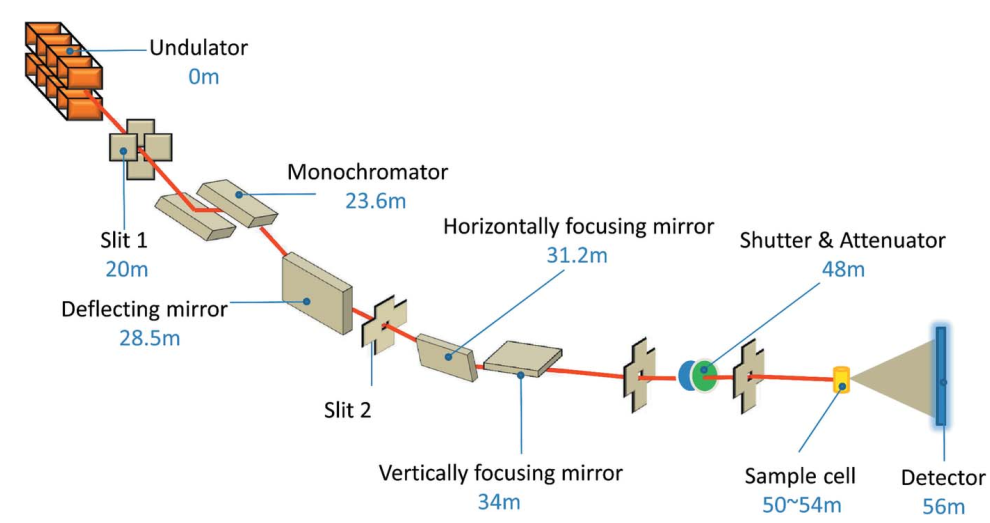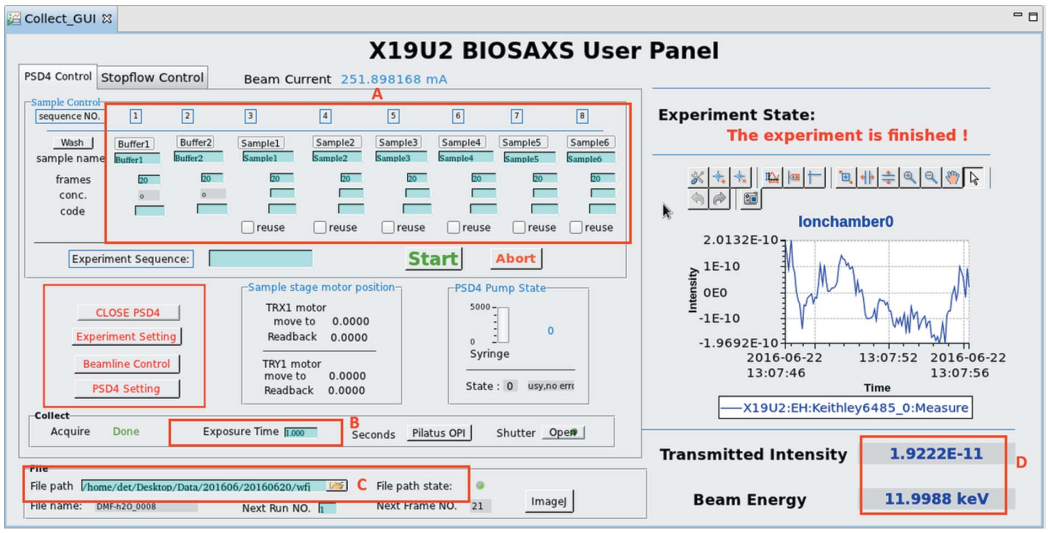About
News and Events
Beamlines
- User Facilities
- Beamlines Directory
- BL08U1-A
- BL08U1-B
- BL09U
- BL13W1
- BL14W1
- BL14B1
- BL15U1
- BL16B1
- BL17U1
- BL01B1
- BL17B1
- BL18U1
- BL19U1
- BL19U2
Technology
- Accelerator Physics
- Accelerator Operations
- Radio Frequency
- Beam Instrumentation
- Control Systems
- Electronics & Detector
- Mechanical Engineering
- Vacuum
- Magnets
- Magnet Power Supplies
- Pulse Technique
- Cryogenics
- Front Ends
- Optics
User Information
Science and Publications
BL19U2 Biological Small Angle X-ray Scattering (BioSAXS) Beamline
1. Introduction
Biological Small Angle X-ray Scattering (BioSAXS) is a popular method that yields valuable structural information of biological macromolecules in solution. As an important part of the Chinese National Centre for Protein Science Shanghai (NCPSS), beamline BL19U2, specializing in BioSAXS, has been officially opened to users since March 2015. BL19U2 is an undulator source beamline, which shares one straight section with another NCPSS crystallography beamline (BL19U1 ), allowing different user groups to collect data simultaneously.
2. Beamline Optics
BL19U2 consists of double crystal monochromator and two focusing mirrors for horizontal and vertical focusing.

3. Beamline Specifications
| Source type | Undulator,U20 |
| Mirrors | |
|
| 1.0m-long Rh-coated focusing mirror,3.5mrad |
| Energy range (keV) | 7-15 |
| Wavelength range(?) | 0.82–1.77 |
| Beam size (detector plane) | 0.33 mm (H) × 0.05 mm (V) |
| Flux (photons s-1) | 34 ×1012 (@12keV ) |
4. End station
? Flight tube: modular design for variable length (0.5m-7m), typically 2m and 6m.
? Detector: Pilatus 1M , Dectris
? An automated sample loading system is used for routine solution scattering experiments.
? An inline sample purification device (Agilent 1260 Infinity) is provided for HPLC-SAXS mode to ensure sample homogeneity and to perform reliable data collection.
? Commercial Linkam heating/freezing stage (HFSX350-CAP,-196℃-350℃) is provided for in-situ SAXS analysis.
? Commercial Biologic SFM-2000 stopped-flow device is available for time-resolved BioSAXS studies triggered by rapid solution mixing.
? GiSAXS mode is also available on request for materials research.

Experimental hutch for the BL19U2 BioSAXS beamline

Beamline control and data acquisition software at BL19U2
5. Support Lab
BL19U2 provides the devices and instruments to meet the basic biological sample preparation requirements.
? Nanodrop spectrophotometer: determining sample concentration
? Wyatt DynaPro NanoStar DLS detector: assessing the purity and monodispersity of samples
? Milli-Q ultrapure water system
? Eppendorf cooled mini-centrifuge
? 4℃ and -40℃ refrigerator
? pH meter
? Electrionic Balance
? Magnetic stirrer
? Vacuum filtration
? Basic consumables
6. Software
? The beamline control and data acquisition software at BL19U2,based on the synApps and motor packages of EPICS, is developed by SSRF.
? ALBULA 3.0 is used to display the recorded two-dimensional images.
? BioXTAS RAW and Fit2D is provided for data processing at BL19U2.
? ATSAS software suite is also available on the beamline for further data processing.
7. Reference
More information on BioSAXS experiments and details of beamline BL19U2, please refer to the following articles:
? Guangfeng Liu, Yiwen Li, et al. Upgraded SSRF BL19U2 beamline for small-angle X-ray scattering of biological macromolecules in solution. 2018(51).
? Na Li, Xiuhong Li, et al. The new NCPSS BL19U2 beamline at the SSRF for small-angle X-ray scattering from biological macromolecules in solution. Journal of Applied Crystallography. 2016(49):1428-1432.
8. Contacts
Na Li
lina02@sari.ac.cn


 Copyright©2006.12 Shanghai Advanced Research Institute.
Copyright©2006.12 Shanghai Advanced Research Institute.